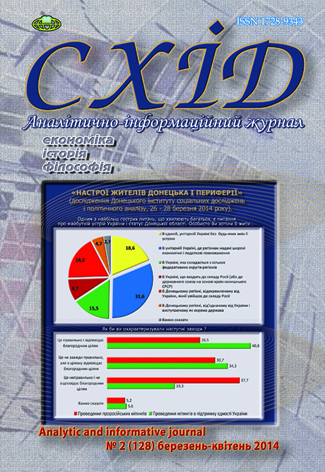Subsidiary model of the government social services regulation: its possible use in Kazakhstan
DOI:
https://doi.org/10.21847/1728-9343.2014.2(128).24588Keywords:
subsidiary model, government regulation, social sphereAbstract
This article discusses the nature and content of subsidiary model of state regulation of the social sphere and the possibility of its use in the Republic of Kazakhstan. Model of state paternalism, in which should be a massive and comprehensive support of the living standards of the population due to the state's resources, has exhausted itself and is not compatible with market principles.
Defines the principles of vicarious model of state regulation of the social sphere: prevention; social investment; interactivity; tolerance. The conditions of the subsidiary model of state regulation of the social sphere: transparency; openness; continuity and intensity of positive information space; public competition; contractual partnership. Matched procedural elements of interaction that will determine the nature of the practical implementation of the proposed ideological principles, namely, target-oriented approach; expert and assessment activities; contests; nontax incentive mechanisms; meeting site; social contract. Established economic and legal mechanisms and organizational solutions subsidiary structural model of state regulation of social services, such as community foundations.
The principles, conditions and procedural elements, economic and legal mechanisms and organizational solutions subsidiary structural model of state regulation of social services allow us to determine the possibility of transition from a paternalistic model to subsidiary for the Republic of Kazakhstan. This means accessible and free to all citizens of basic social services, especially education and health; redistribution of state social spending in favor of the most vulnerable, while reducing assistance provided to families; reduce social inequalities; provide citizens with the highest possible level of social consumption from its own revenues.
The need to achieve this transition imposes extremely stringent requirements for economic growth. The main task in this way- providing high perspective, and most importantly, sustainable economic development.
Downloads
References
Globalization and social security: Report of the International Monetary Fund, 2007 [Електронний ресурс]. - Режим доступу: http://www.globalexchange.org/ resources/wbimf/report
Алшанов Р. А. Методологические проблемы экономической теории в современных условиях/ Р. А. Алшанов // ҚазҰУ хабаршысы=Вестник КазНУ. Сер. экономическая, 2009. - № 3. - С. 34-38.
Государственное управление социально-экономической сферой [текст] : монография / под ред. А.С.Поважного, А.Р. Алшанова ; ДонГУУ, Ун-т Туран. - Донецк; Алматы : ВИК, 2013. - 500 с.
REFERENCES
Globalization and social security: Report of the International Monetary Fund, 2007, available at: http://www.globalexchange.org/ resources/wbimf/report.
Alshanov R.A. (2009), Methodological problems of economic theory in modern conditions, Vestnik KazNU, № 3, р. 34-38.
State social and economic sphere management (2013), DonGUU-Turan, Donetsk-Almaty, p. 500.
Downloads
Published
How to Cite
Issue
Section
License
Copyright (c) 2014 Leila Tusupova, Tetyana Grechko

This work is licensed under a Creative Commons Attribution-NonCommercial-NoDerivatives 4.0 International License.
1. Authors bear responsibility for the accuracy of facts, quotations, numbers and names used.
2. Manuscripts are not sent back.
3. The publisher does not always agree with the authors' opinion.
4. The authors reserve the right to authorship of the work and pass the first publication right of this work to the journal under the terms of a Creative Commons Attribution-NonCommercial-NoDerivatives 4.0 International License. This license allows others to distribute (copy) the published work for non-commercial purposes, provided there is mandatory attribution to its authors and a link to the first publication in our journal.
5. The authors have the right to conclude separate supplement agreements that relate to non-exclusive work distribution in the form in which it has been published by the journal (for example, to upload the work to the online storage of the journal or publish it as part of a monograph), provided that the reference to the first publication of the work in this journal is included.

